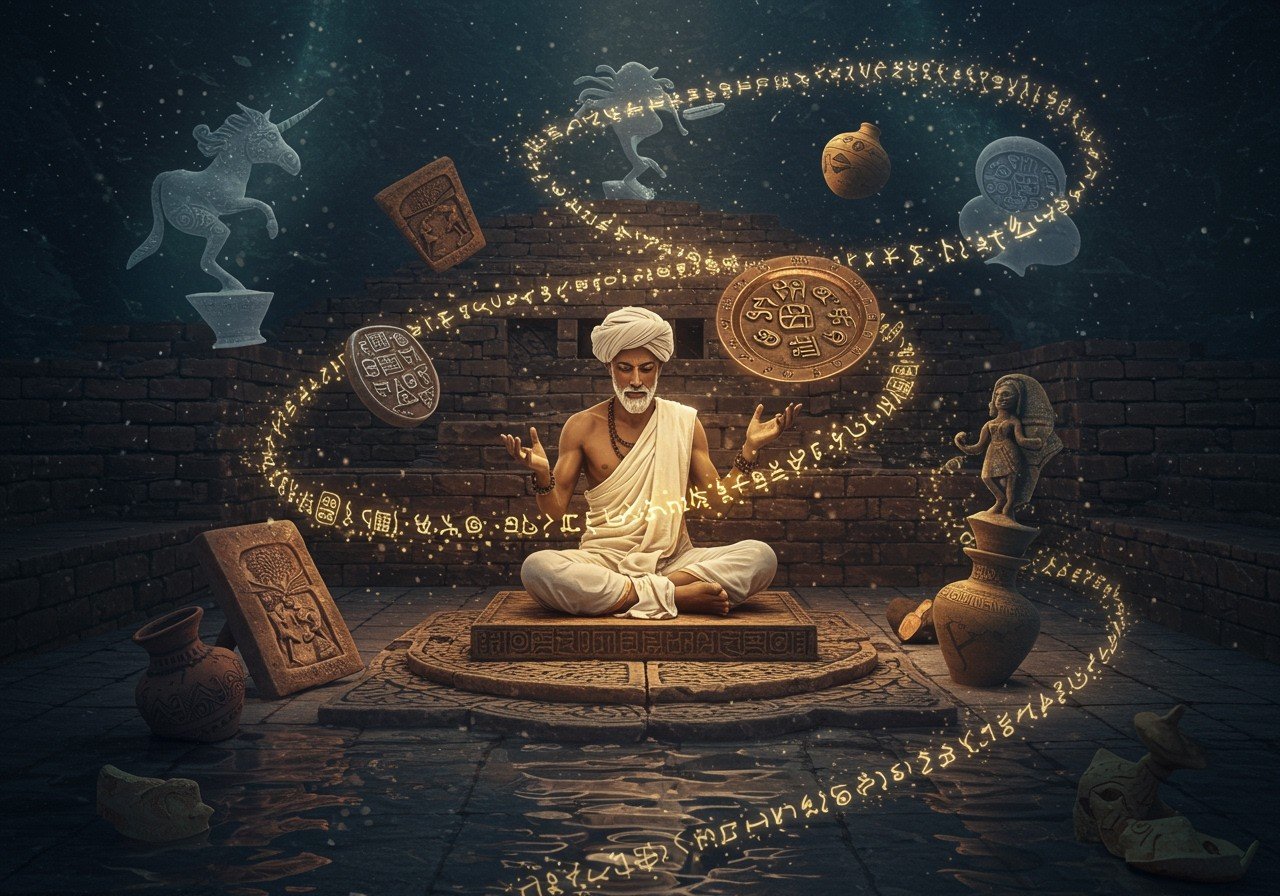
The Indus script, also known as the Harappan script, stands as one of the most intriguing enigmas of the Indus Valley Civilization (3500-2000 BC). Despite being one of the earliest urban cultures, this collection of symbols remains undeciphered. This raises fundamental questions about how this ancient society communicated, governed, and organized its complex urban centers. Understanding Harappa’s historical and cultural significance underscores the importance of deciphering its script, a key to unlocking the civilization’s legacy.
Origins and Discovery
Historical Background
The Harappan script emerged during the Indus Valley Civilization, a Bronze Age society that flourished in northern India. Its discovery in the early 20th century at key excavation sites like Harappa and Mohenjo-Daro marked a turning point in our understanding of ancient South Asia. Prominent archaeologists, including Sir John Marshall, played crucial roles in unearthing these inscribed artifacts. The script has been found on a variety of materials, from seals and pottery to tablets, indicating its use in diverse contexts.
Characteristics
Physical Attributes
The Indus script comprises approximately 400-600 distinct symbols. These symbols exhibit a range of forms, from geometric patterns to potentially pictorial representations. The variety of artifacts bearing these symbols suggests a wide range of applications. A central debate revolves around whether the script represents a full-fledged language or a system of symbols primarily used for trade, administration, or ritual purposes.
Decipherment Attempts
Scholarly Efforts
Numerous scholars have dedicated themselves to deciphering the Harappan script. Researchers like Iravatham Mahadevan have employed various methodologies, including linguistic analysis, statistical modeling, and computational approaches. Some theories propose connections to Dravidian or Proto-Elamite languages, while others suggest links to the Brahmi script and Sanskrit, although these claims remain contested due to the script’s brevity and the lack of longer inscriptions.
The Language of Harappa
Potential Languages
The language spoken by the Harappans remains a mystery. The undeciphered script leaves us with only hypotheses. Some scholars suggest a Dravidian language basis, citing linguistic patterns found in later South Indian languages. Other theories propose connections to Austroasiatic or Indo-European language families. Each theory has significant implications for our understanding of Harappan society, culture, and their place within the broader context of ancient civilizations.
Cultural Significance and Meaning
Historical Impact
Harappa, named after the modern town near the archaeological site in Punjab, Pakistan, represents a high point of urban development, trade networks, and social organization within the Indus Valley Civilization. Understanding Harappa allows us to appreciate the complexities of ancient urban life and its lasting impact on subsequent South Asian cultures.
Impact on Modern Understanding
Contemporary Challenges
The undeciphered script poses significant challenges for our understanding of the Indus Valley Civilization. Historians and archaeologists struggle to interpret social structures, economic activities, political systems, and religious beliefs. Deciphering the script would revolutionize our knowledge of this crucial period in human history.
How Poojn.in Connects You to Ancient Indian Heritage
While the mysteries of the Harappan script continue to intrigue us, you can connect with India’s rich cultural heritage through authentic products available at Poojn.in. Even though we cannot yet read the words of the Harappans, we can engage with living traditions through meaningful rituals and practices. Poojn.in offers a wide selection of items to support your spiritual journey and connection to ancient India:
- Pure Copper Items: Explore our collection of copper vessels and ritual items, reminiscent of the metalworking traditions prevalent during the Indus Valley Civilization. Copper has been used in Indian rituals for centuries, and our products allow you to connect with this ancient practice.
- Traditional Puja Items: Access authentic materials for religious ceremonies, ensuring the continuation of Indian spiritual practices with roots stretching back to antiquity. We offer a wide range of items, from incense and diyas to statues and malas.
- Vedic Ritual Materials: Find all the necessary items for performing traditional Vedic rituals, passed down through generations. Our selection includes everything you need to create a sacred and meaningful experience.
Visit Poojn.in today to discover our complete range of traditional and authentic puja items. We are committed to providing high-quality products delivered conveniently to your doorstep, empowering you to maintain sacred traditions in the modern world.
Conclusion
The script and language of Harappa remain an enduring mystery, a testament to the complexity and richness of the Indus Valley Civilization. As scholars continue their research, each new discovery brings us closer to understanding this ancient society. The quest to decipher the Harappan script is not merely an academic pursuit but a journey into our shared human past. By learning about Harappa, we honor the legacy of a civilization that shaped many aspects of later South Asian cultures, reminding us of the enduring connections between past and present.


